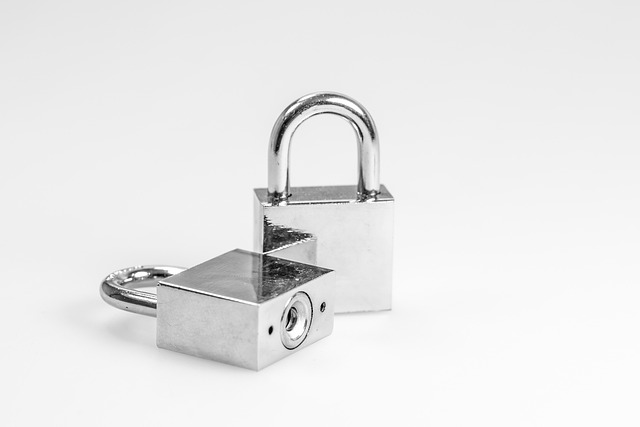Advanced access control technology transforms security management with multi-factor authentication, streamlined visitor management, and data analytics for operational efficiency. Implementing these solutions requires a comprehensive site assessment, selection of tailored hardware and software, and strategic planning for seamless integration. Key features include biometric authentication, customizable access levels, cloud-based management, audit trails, and integration capabilities. Regular updates and maintenance are crucial for robust business security and maximum system efficiency.
“Revolutionize your security with reliable installation of advanced access control technology. In today’s digital era, robust entry control solutions are paramount for protecting assets and ensuring safety. This comprehensive guide delves into understanding key components, assessing site suitability, selecting the right system, and best practices for seamless integration. Learn how to maintain and update your infrastructure, ensuring a secure and efficient environment. Discover the benefits of advanced access control technology and unlock a new level of security.”
- Understanding Advanced Access Control Technology: Key Components and Benefits
- Assessing Your Site for Reliable Entry Control Solutions
- Choosing the Right Access Control System: Features to Consider
- Installation Best Practices for Seamless Integration
- Maintaining and Updating Your Access Control Infrastructure
Understanding Advanced Access Control Technology: Key Components and Benefits

Advanced access control technology is a sophisticated system designed to manage and secure access to specific areas, offering more than just keycard or biometric recognition. It involves a comprehensive network of hardware and software components working together to provide robust security. Key elements include readers, controllers, software for managing permissions, and often, integration with existing security systems.
The benefits are multifaceted: enhanced security through multi-factor authentication, improved visitor management, and the ability to monitor and track access. This technology allows for precise control over who enters restricted zones, ensuring that only authorized personnel gain access. Moreover, it contributes to overall operational efficiency by streamlining entry processes, reducing wait times, and providing valuable data insights for better facility management through analytics.
Assessing Your Site for Reliable Entry Control Solutions

When considering reliable installation of advanced access control technology, a thorough assessment of your site is paramount. Start by evaluating your existing security infrastructure and identifying areas that require enhancement. Entry control solutions should be tailored to address specific needs such as visitor management, authorization levels, and staff accessibility. Understanding traffic flow patterns and high-risk zones within your facility is crucial for designing an efficient system.
Consider factors like environment (interior vs exterior), foot traffic volume, and the type of access points. This analysis will guide selection of appropriate hardware—from readers and controllers to software that manages permissions and logs. By aligning entry control solutions with your site’s unique characteristics, you ensure optimal performance, reliability, and seamless integration into your existing security framework.
Choosing the Right Access Control System: Features to Consider

When selecting an access control system, understanding your facility’s unique needs is crucial. Modern entry control solutions offer a range of features beyond basic door locking mechanisms. Advanced systems may include biometric authentication (fingerprint or facial recognition), card readers, key fobs, and mobile access, providing layered security. Look for a system that allows customization to meet specific requirements, such as different access levels for employees, contractors, or visitors.
Additionally, consider the system’s scalability and flexibility. As your facility grows or security needs evolve, your access control technology should adapt. Cloud-based management platforms offer real-time monitoring and remote access, ensuring efficient administration. Features like audit trails, integration with existing security systems, and easy user management are also valuable assets for a robust and reliable entry control solution.
Installation Best Practices for Seamless Integration

When implementing advanced access control technology, seamless integration is key for effective operation and user acceptance. Best practices include thorough planning and design, ensuring compatibility with existing infrastructure. Start by assessing your facility’s layout, identifying areas requiring entry control solutions, and understanding workflow demands. This allows for strategic placement of readers and devices, minimizing disruption to daily operations.
During installation, prioritize clear communication between IT and security teams. Integrate access control systems with building management software where possible, enabling centralized control and monitoring. Regular testing and calibration of readers ensure accurate and reliable performance. Additionally, provide comprehensive training for staff, fostering a culture of security awareness that leverages the advanced capabilities of your new entry control solutions.
Maintaining and Updating Your Access Control Infrastructure

Maintaining an up-to-date access control infrastructure is paramount for any business aiming to provide robust security. Regular updates ensure your entry control solutions remain effective against evolving threats, such as sophisticated hacking attempts and advanced physical breaches. A proactive approach includes implementing a maintenance schedule for all hardware and software components, including door controllers, readers, and access management software. This involves routine checks, firmware upgrades, and testing to verify system functionality.
Proactive monitoring also enables quick issue resolution. By staying current with the latest security patches and updates, you minimize vulnerabilities that could be exploited by unauthorized individuals. Moreover, regular maintenance extends the lifespan of your access control systems, ensuring they remain reliable and efficient in controlling who enters and exits your premises.
Implementing advanced access control technology is a strategic move towards enhancing security and streamlining operations. By understanding the key components, assessing your site’s unique needs, and choosing the right system, you can ensure reliable entry control solutions. Proper installation practices and regular maintenance are vital for seamless integration and optimal performance. Embrace these best practices to create a robust security infrastructure that keeps pace with evolving requirements.
